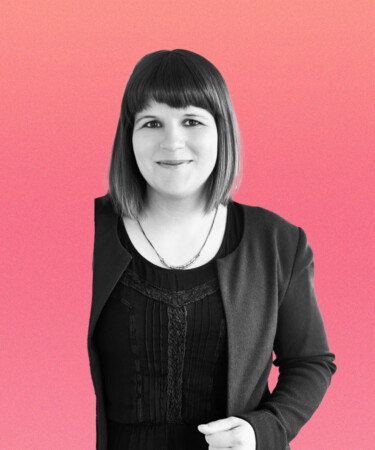A new food documentary is about a story many outlets are rightfully describing as epic. “The Most Remote Restaurant in the World” details the move of KOKS — a Michelin Star-winning restaurant led by chef Poul Andrias Ziska — from the Faroe Islands to a small village in Greenland. As you might imagine, bringing an immersive fine dining experience to a town of 53 on the west coast of Greenland is no picnic. The gripping film, which is available to watch on Scandinavian streaming service Viaplay, follows the struggles and successes as the KOKS team navigates operating in the middle of nowhere, sourcing faraway wines, and pairing with local ingredients like ptarmigan and whale.
The move occurred to accommodate guests as the Faroe Islands spot undergoes renovations. The Greenland outpost will again be open in the summer of 2024, from June 12 to Sept. 7. Beyond that, the restaurant will return to the Faroe Islands, but the daring project has been so captivating that the team might pursue pop-ups elsewhere down the road.
Karis Visth is the restaurant manager and head sommelier at KOKS. We spoke with Visth about the adventurous undertaking that is bringing fine wine to Greenland.
1. What did you learn about the fine dining experience with the restaurant’s move to Greenland?
KOKS has changed locations several times in the last 12 years. We have been open for both shorter and longer periods in various locations in the Faroe Islands, as well as in other places around the world, such as Singapore, Denmark, and now Greenland. Every time we reopen in a new location, we have the opportunity to improve our concept and incorporate new ideas into the existing one. For us, the process of moving and reopening the restaurant is an extremely creative moment where we learn a lot and elevate the restaurant to higher standards.
2. The documentary suggests the locals were pretty welcoming toward the project. How do you think the reception in Greenland was to KOKS?
We felt very welcomed in Greenland and are pleased with the local support we received in Ilimanaq.
3. What was the most challenging part in working with local ingredients?
Greenland is extremely vast, and the distances are enormous. While in the Faroe Islands, we are surrounded by all our suppliers, and the distances are very small, it is much more time-consuming to obtain local ingredients in Greenland. Additionally, building relationships with local suppliers also takes time.
4. What issues did you face in sourcing wine? Was it difficult to ship bottles that far?
Shipping bottles to a place as remote as Ilimanaq, Greenland, takes time, and from the moment I place the order for wines, it can take 5–6 weeks before the bottles arrive. Before Greenland, we were more accustomed to making weekly changes and adaptations in our beverage pairing. Now KOKS Greenland is organized and planned months in advance, and there are no opportunities to make changes or be spontaneous.
5. What wines did you bring to the restaurant and why? Is there a pairing you’re
particularly proud of?
We curated the wine cellar list primarily with classic European wines, focusing on regions like Champagne, Burgundy, Piedmont, Pfalz, and others.
KOKS is also a part of the Lighthouse project of Château d’Yquem in Sauternes, France, which means we have the opportunity to include their amazing wines in our selection, served with a
savory dish. The bottle size we used for KOKS Greenland was 3 liters and was a highlight for many of our KOKS guests.
6. How much focus did you put into creating the wine list in Greenland?
Since the restaurant is only open during the summer, and many guests enjoy our set wine pairing option, we created a smaller wine list with around 120 wines to choose from. We decided to keep the majority of our wine cellar list in the Faroe Islands and ship only a small selection of some of the finest, aged bottles to Greenland. Therefore, most of the wines on the wine cellar list at KOKS Greenland are wines we purchased specifically for our Greenland project.
7. Did you have any local liquids on the menu? Are there beers or spirits from
Greenland?
We chose to brew our own beer for the KOKS Ilimanaq project in collaboration with the Faroese brewery OY. The beer is crafted with two typically Greenlandic products — blueberries and juniper. Thanks to the addition of lactose sugar, it has a slightly sweet taste. From Greenland, we include spirits on our digestive list, infused with Greenlandic herbs such as bog Labrador tea and other botanicals.
8. Are there any wine regions or styles you are particularly interested in at the moment?
There are many smaller wine regions that are less known but are doing wines on a very high level. I would love to use more wines from small island regions/countries like Tenerife or Greece. But also other beverages like sake or sherry can be interesting to pair with our food.
9. Is there another faraway destination you would like to open a restaurant at?
We dream of having a pop-up in Japan one day before returning to our home, the Faroe Islands.
This story is a part of VP Pro, our free platform and newsletter for drinks industry professionals, covering wine, beer, liquor, and beyond. Sign up for VP Pro now!
